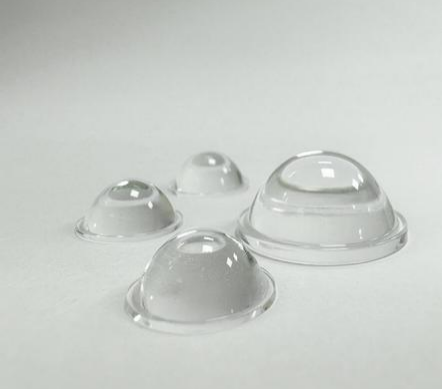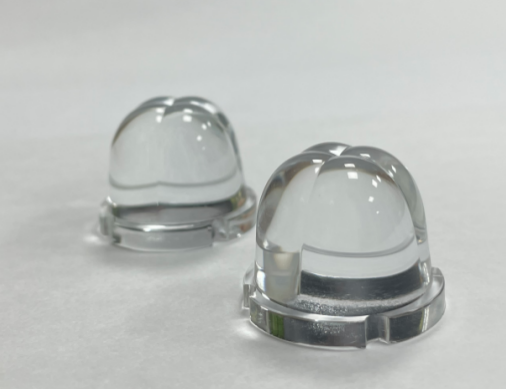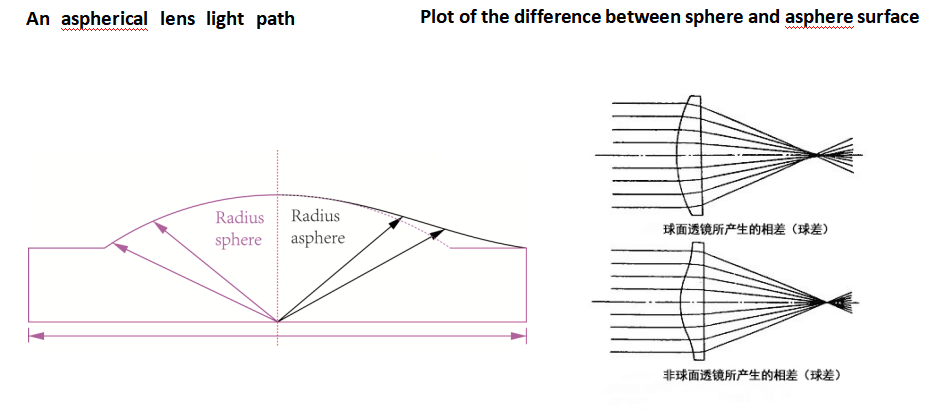Application of aspherical lenses & advantages
Release time:
2024-03-05 18:08
Source:
1. Introduction to the aspheric lenses
An aspherical lens: An aspherical lens is that the radius of curvature from the center to the edge changes continuously with the increase of height. In the use of a camera lens, if only the spherical lenses are used, more lenses are needed to play a better optical performance. An aspherical lens can reduce the number of lenses because of its unique radius of curvature. Therefore, in the camera lens, the use of an aspheric lens is particularly important.

Inspherical lens display:


2. Application areas of aspherical lenses
The aspherical lens has better surface, so it is widely used in optical instrument, image and optical electronics industry. Such as digital cameras, CD players, high-end microscopy instruments, lasers, exposure and semiconductor machinery.


3. Advantages of aspherical lenses in laser applications
1、 Generally speaking, due to the symmetry of the sphere of the traditional spherical lens, when using different wavelength of light irradiation, the lens will have different refractive index, and cause color difference. The aspherical lens can be corrected by designing an asymmetric radius of curvature, so that the rays of different wavelengths have the same refractive index in the lens, thus reducing the color difference.
2、Correction of image field deformation or distortion. The lens will deform or distort the object at the edge of the image, affecting the clarity of the image. The aspherical lens can be better corrected for image field deformation or distortion by designing an asymmetric radius of curvature so that the light at different positions has the same refractive index within the lens.
3、To achieve a larger field of view and a higher resolution. The aspherical lens can be designed to create a larger field of view, make the coverage of the lens more extensive, and can also improve the resolution of the image field correction, so as to better meet the needs of the application.
4、To achieve much smaller optical systems. Due to the symmetry of the spherical lens, the spherical lens needs to increase the lens to achieve the imaging quality, which makes the optical design complicated and increases the cost.aspherical lenses can be specially designed to achieve equal imaging quality, reduce optical components and reduce design costs, thus enabling smaller optical systems.
5、Because of its unique radius of curvature, coupled with the special process, asphlens can reduce the counterfeiting on the market and ensure the quality of the product.

With the continuous improvement of imaging quality requirements on the market, aspherical lens has the advantages of reducing color difference, correcting image field change or distortion, achieving larger field of view, higher resolution and achieving smaller optical system. As more and more people know the laser application, it is believed that the use rate of aspherical lens in laser application will gradually increase.
Recommended Articles
透镜,让世界更美好
2 minutes to understand the principle of the microstructure array lens
Microstructure array lenses are formed by nanoscale sub-lenses arranged in a certain order. Since each sublens in the microstructure array lens has an independent optical axis, a main optical axis is formed. Therefore, compared with the traditional compound eye single lens, the microstructure array lens has extremely high parallelism, and each sub-lens can transmit the light source independently of each other without interfering with each other.
What do you know about a spherical lens?
A spherical lens is a lens with a fixed radius of curvature on the surface of the lens inside the optical aperture. Spherical lenses are mainly divided into double convex lens, flat and concave lens, concave and convex lens, double concave lens, etc., which can be customized according to customer drawings or sample processing, to meet the different application needs of customers.
The difference between the Powell prism and the cylindrical array mirror
Powell prism: It is an optical nonspherical cylindrical mirror that allows the laser beam to preferably form a straight line with uniform density. Cylinder array mirror: Cylinder array mirror belongs to a kind of lens array. The core is the cylindrical microstructure distributed above, which can effectively reduce the spherical difference and chromatic difference by designing the aspherical surface shape, and has a one-dimensional amplification function.







